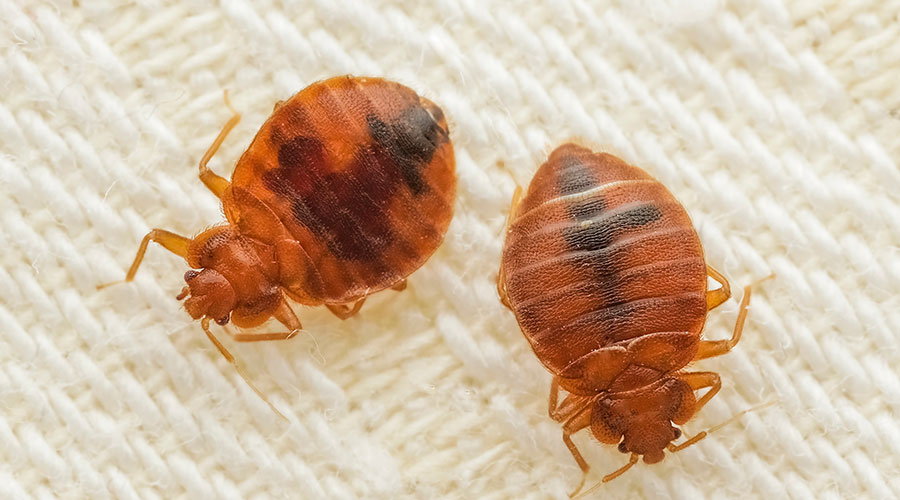
By prioritizing pest control in hospitals, managers can create a hygienic environment that promotes healing, recovery and well-being.
What you cannot see can hurt you. Invisible to the naked eye is a world of microorganisms so small they can only be seen by a microscope. But what you can see can also spread disease. Vectors — frequently arthropods, such as spiders, flies, fleas, bedbugs and lice — can transmit infectious diseases either actively or passively:
- Biological vectors, such as mosquitoes and ticks, can carry pathogens that can multiply within their bodies and be delivered to new hosts, usually by biting.
- Zoonotic diseases can be transmitted from animals — mice, rats, bats, birds, etc. — to people. More specifically, such diseases normally exist in animals but can infect humans. There are multitudes of zoonotic diseases.
Hospitals and other healthcare facilities sometimes choose to outsource pest managementActive Design: An approach to the development of buildings, streets, and neighborhoods that uses architecture and urban planning to make daily physical activity and healthy foods more accessible and inviting responsibilities because of the consequences of pesticide overuse or misapplication. They do so to avoid the possibility of an uncontrolled pest infestation.
The pest managementActive Design: An approach to the development of buildings, streets, and neighborhoods that uses architecture and urban planning to make daily physical activity and healthy foods more accessible and inviting contractor provides trained and licensed technicians who use an integrated pest managementActive Design: An approach to the development of buildings, streets, and neighborhoods that uses architecture and urban planning to make daily physical activity and healthy foods more accessible and inviting program. In many cases, these technicians work with the facility’s director of environmental services to identify maintenance and sanitation issues that could contribute to a pest problem.
A pest-free environment plays a crucial role in maintaining the integrity and safety of hospitals. Here are key reasons highlighting the importance of pest control in healthcare facilities:
Protecting patient health. Pests such as rodents, insects and flies can transmit diseases and compromise patient health. Implementing effective pest control measures helps prevent the spread of infections and safeguards the well-being of vulnerable individuals.
Preventing contamination. Pests can contaminate food, medical supplies and equipment, jeopardizing the sterile environment required in hospitals. Proper pest control practices minimize the risk of contamination and ensure the integrity of healthcare processes.
Preserving reputation and trust. Hospitals are entrusted with the responsibility of providing high-quality care. Any pest-related issues can tarnish this reputation and erode patient trust. Maintaining a pest-free environment demonstrates a commitment to cleanliness, professionalism and patient safety.
Regulatory compliance. Health and safety regulations mandate that hospitals maintain pest-free environments. Compliance with these regulations is essential to avoid legal consequences, fines and potential closure.
Enhancing staff morale. Hospital staff work in demanding environments, and the presence of pests can harm morale and productivity. By ensuring a pest-free workplace, staff can focus on their responsibilities without distractions or health concerns.
Minimizing structural damage. Pests such as termites and rodents can cause significant structural damage to hospital buildings and infrastructure. Timely pest control measures prevent costly repairs and help maintain the longevity of facilities.
Supporting effective infection control. Pests can compromise infection control protocols by spreading pathogens or contaminating sterile areas. Proper pest control is a critical component of comprehensive infection control strategies, contributing to patient safety and reducing healthcare-associated infections.
Pest managementActive Design: An approach to the development of buildings, streets, and neighborhoods that uses architecture and urban planning to make daily physical activity and healthy foods more accessible and inviting in healthcare facilities is vital for protecting patient health, maintaining cleanliness, complying with regulations, preserving reputation and supporting optimal healthcare delivery. By prioritizing pest control in hospitals, managers can create a secure and hygienic environment that promotes healing, recovery and well-being.
J. Darrel Hicks, BA, MESRE, CHESP, Certificate of Mastery in Infection Prevention, is the past president of the Healthcare Surfaces Institute. Hicks is nationally recognized as a subject matter expert in infection prevention and control as it relates to cleaning. He is the owner and principal of Safe, Clean and Disinfected. His enterprise specializes in B2B consulting, webinar presentations, seminars and facility consulting services related to cleaning and disinfection. He can be reached at [email protected], or learn more at www.darrelhicks.com.
The post "In Hospitals, Pest Control Is Infection Control" appeared first on Healthcare Facilities Today






0 Comments